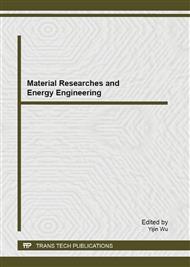p.536
p.543
p.549
p.556
p.560
p.566
p.571
p.581
p.587
Comparative Study of the Hydrodynamic Performance of Shorter and Longer Blades in a Swirling Fluidized Bed
Abstract:
Fluidized beds have been widely used in industrial processes. The inefficiency of current systems provides opportunities for improvement and development of new fluidized bed techniques. The swirling fluidized bed is an outcome of such a quest. The main shortcomings of present day SFB systems are the underutilization of available annular area and massing of bed particles at the periphery of the bed column. In this work the authors report the effect of increasing the annular area in a Swirling Fluidized Bed (SFB) by using longer blades for the distributor and compare it to the conventional blade length of 50 mm. Distributor blades of two different lengths, 50 mm and 100 mm, was used in this work and the bed height was measured with spherical bed particle of three different sizes (4 mm, 5 mm, 6 mm) at varying bed weight and superficial velocity. For a given bed weight, the benefits are achieved through a lower bed pressure drop as well as better quality of fluidization.
Info:
Periodical:
Pages:
560-565
Citation:
Online since:
September 2013
Price:
Сopyright:
© 2013 Trans Tech Publications Ltd. All Rights Reserved
Share:
Citation:


